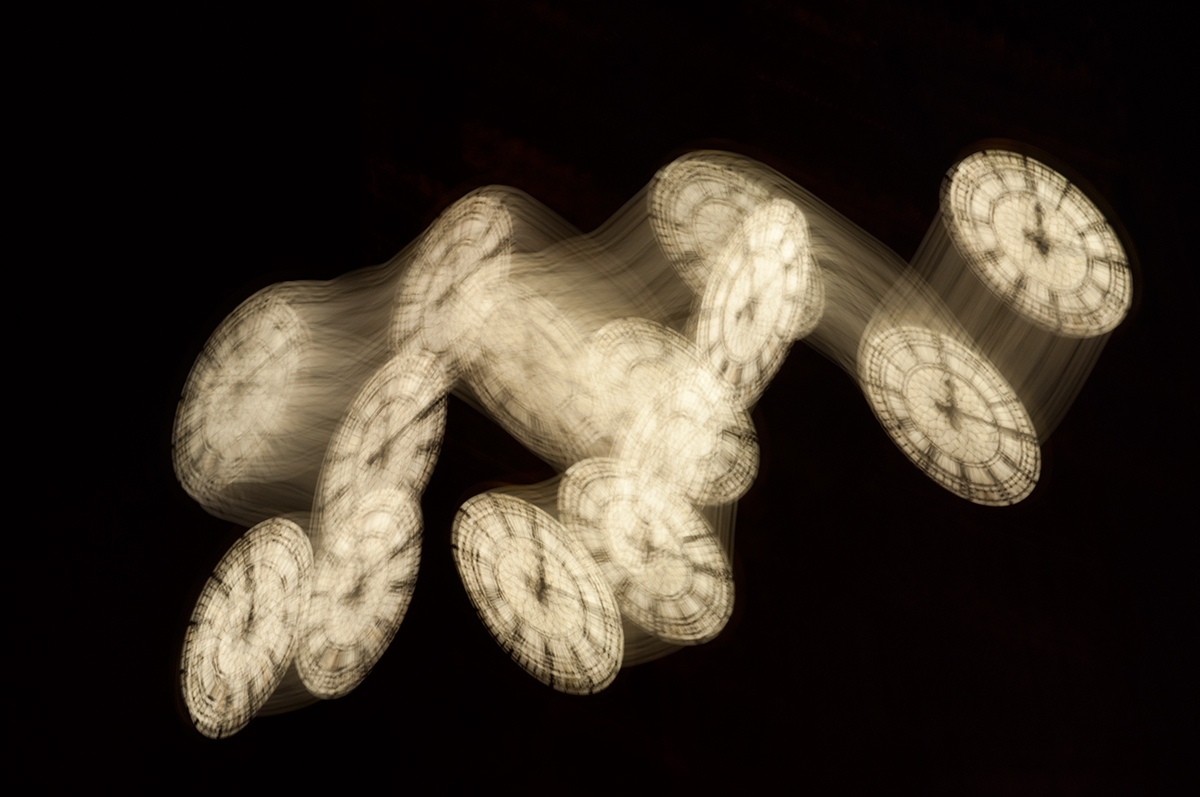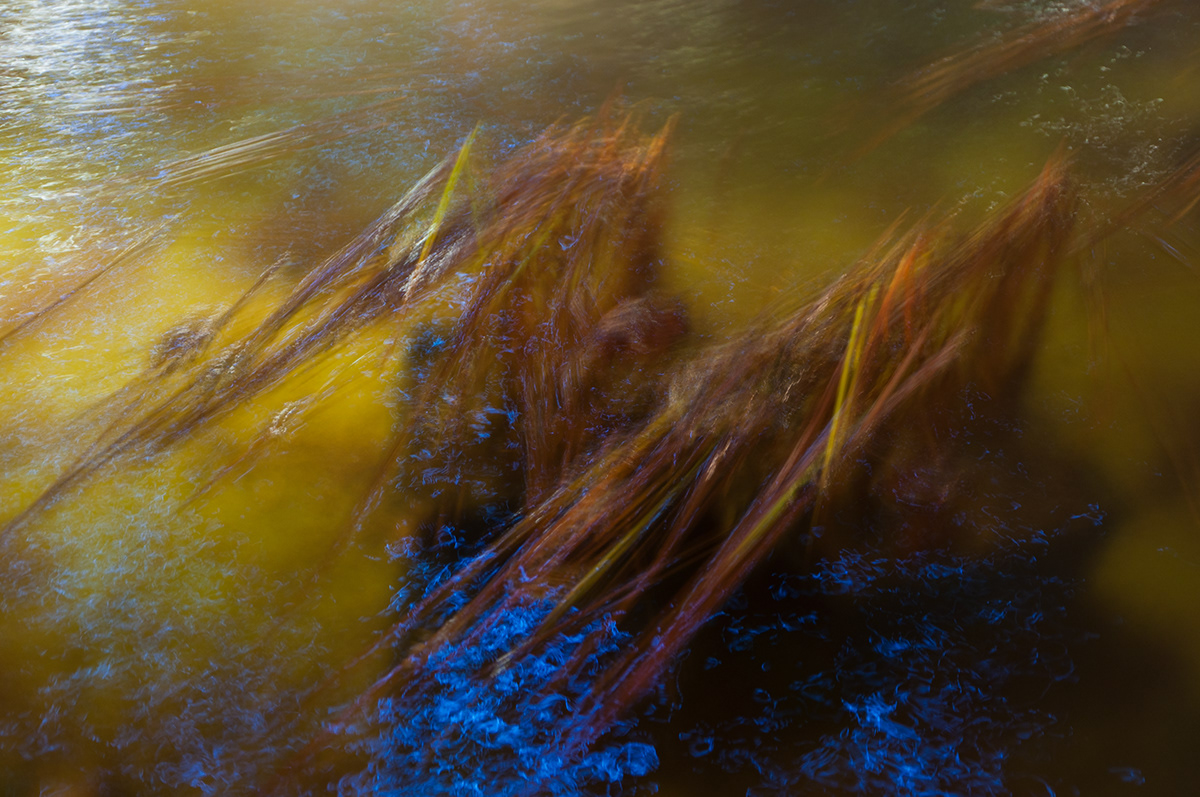
Visualizing Ambiguity in Architecture
Photographic images by David Holmes for the 'Collective Exchange' exhibition London, 2012.
Photographic images by David Holmes for the 'Collective Exchange' exhibition London, 2012.
As a Londoner, born and bred, there is an intriguing dissonance between the London of my childhood and that of my adult life. Much has changed and much remains relatively unchanged. This has inspired me to document in some way the nature of these changes as I experience them on a regular basis, be they cultural landmarks or the ordinary everyday things that go unnoticed.
My photography involves the practice of compound camera movements to create unique renditions of objects and environments. I use the camera to simultaneously capture and manipulate an image, combining long exposure times with intentional camera movement (ICM) to generate new forms, colours, and textures. I do this to express the fusion of my inner and outer worlds at the point where mind meets matter. The resulting work is as much a documentation of the artistic photographic process as it is any external reality.
I intend to make images that are open to multiple interpretations, where the subject matter may be seen as analogous to something else. When visualizing architecture this ambiguity leads to a reassessment of the facts and the clarity to freely associate beyond the boundaries of the original design. Viewers are encouraged to question their own vision and inner responses.
My photography involves the practice of compound camera movements to create unique renditions of objects and environments. I use the camera to simultaneously capture and manipulate an image, combining long exposure times with intentional camera movement (ICM) to generate new forms, colours, and textures. I do this to express the fusion of my inner and outer worlds at the point where mind meets matter. The resulting work is as much a documentation of the artistic photographic process as it is any external reality.
I intend to make images that are open to multiple interpretations, where the subject matter may be seen as analogous to something else. When visualizing architecture this ambiguity leads to a reassessment of the facts and the clarity to freely associate beyond the boundaries of the original design. Viewers are encouraged to question their own vision and inner responses.

Time and Place
The time, location, and weather are important determinants and sometimes preconditions for my photography. Often I like to work at night with hard electric light as my palette and the environment as my canvas. Our changing perception and physical connection with light is most acutely recognised in the dark.Everyday at dusk the urban lightscape dynamically reignites. The interplay of electric light and natural atmosphere is never the same twice and the view is constantly changing. Within this environmental dance are man-made events taking place both randomly and with precision timing. As a photographer I tune in to these events and note the promising behaviours, changes and conditions.
For example the green display light at the top of Big Ben switches off around midnight making photography of the isolated clock face much easier. There is also less ambient light from traffic and shops during the early hours of the morning. At other times there may be an abundant flow of people to focus on or interesting activity from wildlife. The city is fertile ground for serendipitous discoveries.

Image Capture
Each photoshoot may produce hundreds of photographs. The linear sequence of images is intrinsically experimental. The camera movements I perform during each image capture are based on the outcome of the preceding image. Each capture provides information for the next and so on down the historical timeline. The ability to instantly review the image allows me to make creative decisions in real-time. Every image is in some way an extension or derivative of the preceding images.
The developing sequence fuels my imagination and guides the creative process. There is a progression involving simplification, precision, practice, and refinement, coupled with random chaotic gesticulations and ideas to facilitate further inspiration.
During night photography the length of exposure is determined by my physical and mental senses, intuitively. The camera is operated in manual ‘bulb’ exposure mode and I decide when to open and close the shutter as the camera is being moved, like recording a very short movie within a frozen frame.
During night photography the length of exposure is determined by my physical and mental senses, intuitively. The camera is operated in manual ‘bulb’ exposure mode and I decide when to open and close the shutter as the camera is being moved, like recording a very short movie within a frozen frame.

How it Feels
Whilst photographing I become acutely aware of the surrounding environment, the objects within it and my relationship to them. There is a lucidity I call ‘the zone’. I feel conjoined to this landscape initially via my line of sight in the camera viewfinder and subsequently via my hands steering the camera body during the final exposure. It feels as if I am manipulating the scene directly much like a painter or a sculptor does.There are elements of emotion and performance experienced during the image creation analogous to playing a musical instrument. One may think of the camera as a conductor’s baton, both recording and directing the compound articulation, rhythm, intensity, and shape of the composition. My hand gestures are the primary means of conveying visual ideas, combined with critical evaluation.

"Perfect Contour" - London Eye, 2011.
Equipment Used
Lenses: Nikon 18-105mm f/3.5-5.6G DX ED VR AF-S; Nikon 50mm F1.8G AF-S; various vintage lenses.
Computer: Samsung RV511 laptop computer, Dell Monitor.
Software: Adobe Photoshop CS5 with various plugins.
All main creative image manipulations take place in camera, in real-time on location.
Minor post-processing adjustments for display and print are made in Camera Raw/Photoshop.



'Collective Exchange' Exhibition London 2012
A collaborative art exhibition featuring the work of five member artists: Stewart Ewin, Tom Hair, David Holmes, Conleth Moran, and David Stark. Held at Central Saint Martins Back Hill Site, 10-17 February, 2012.
Project Tutors: Caroline Stevenson, Shiraz Bayjoo
Crisis Creative Arts Manager: Paula Lonergan
Art Technician: James Thomas
‘Collective Exchange’ refers to the conversations between the artists and tutors over the several months that inspired new ideas and helped their work to evolve.
The project aimed to develop critical thinking around the members’ artistic practice through the process of researching and developing new artwork.
The project aimed to develop critical thinking around the members’ artistic practice through the process of researching and developing new artwork.
The 10 images/prints shown here are part of the larger 26 image collection 'Visualizing Ambiguity in Architecture' shown for the exhibition.


"Reflection" - Jubilee Park, Canary Wharf, London, 2011.



